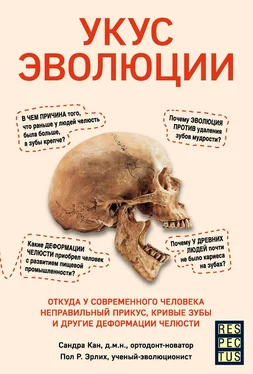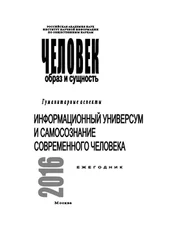6. P. Chin Evans and A. R. McConnell. 2003. Do racial minorities respond in the same way to mainstream beauty standards? Social comparison processes in Asian, black, and white women. Self and Identity 2: 153–167.
7. C. C. I. Hall. 1995. Asian eyes: Body image and eating disorders of Asian and Asian American women. Eating Disorders 3: 8–19.
8. D. E. Lieberman, G. E. Krovitz, F. W. Yates, M. Devlin, and M. S. Claire. 2004. Effects of food processing on masticatory strain and craniofacial growth in a retrognathic face. Journal of Human Evolution 46: 655–677.
9. G. Korkhaus G. 1960. Present orthodontic thought in Germany: jaw widening with active appliances in cases of mouth breathing. American Journal of Orthodontics 46: 187–206, Mew JRC. 2004a. The postural basis of malocclusion: A philosophical overview. The American Journal of Orthodontics and Dentofacial Orthopedics 126: 729–738; P. Defabjanis. 2004. Impact of nasal airway obstruction on dentofacial development and sleep disturbances in children: Preliminary notes. Journal of Clinical Pediatric Dentistry 27: 95–100.; and K. Lopatien and A. Babarskas A. 2002. Malocclusion and upper airway obstruction. Medicina 38: 277–283.
10. E. Gokhale and S. Adams. 2008. 8 steps to a pain-free back. Stanford, CA: Pendo Press; J. Kratěnová, K. ŽEjglicová and V. Filipová. 2007. Prevalence and risk factors of poor posture in school children in the Czech Republic. Journal of School Health 77: 131–137.
11. Там же.
12. D. Yosifon and P. N. Stearns. 1998. The rise and fall of American posture. The American Historical Review 103: 1057–1095.
13. A. T. Masi and J. C. Hannon. 2008. Human resting muscle tone (HRMT): Narrative introduction and modern concepts. Journal of Bodywork and Movement Therapies 12: 320–332.
14. K. Grimmer. 1997. An investigation of poor cervical resting posture. Australian Journal of Physiotherapy 43: 7–16.
15. P. B. M. Conti, E. Sakano, M. Â. G. d’O. Ribeiro, C. I. S. Schivinski, and J. D. Ribeiro. 2011b. Assessment of the body posture of mouth-breathing children and adolescents. Jornal de pediatria 87: 357–363; P. Nicolakis, M. Nicolakis, E. Piehslinger, G. Ebenbichler, M. Vachuda, C. Kirtley, and V. Fialka-Moser. 2000. Relationship between craniomandibular disorders and poor posture. Cranio: The Journal of Craniomandibular Practice 18: 106–112; and E. F. Wright, M. A. Domenech, and J. R. Fischer. 2000. Usefulness of posture training for patients with temporomandibular disorders. The Journal of the American Dental Association 131: 202–210.
16. H. Nittono, M. Fukushima, A. Yano, and H. Moriya. 2012. The power of kawaii: Viewing cute images promotes a careful behavior and narrows attentional focus. PLoS ONE 7: e46362.
17. V. A. De Menezes, R. B. Leal, R. S. Pessoa, and R. M. E. S. Pontes. 2006. Prevalence and factors related to mouth breathing in school children at the Santo Amaro project – Recife, 2005. Brazilian Journal of Otorhinolaryngology 72: 394–398.
18. C. Sforza, R. Peretta, G. Grandi, G. Ferronato, and V. F. Ferrario. 2007. Three-dimensional facial morphometry in skeletal Class III patients: A non-invasive study of soft-tissue changes before and after orthognathic surgery. British Journal of Oral and Maxillofacial Surgery 45: 138–144.
19. A. A. Ali, S. Richmond, H. Popat, R. Playle, T. Pickles, A. I. Zhurov, D. Marshall, P. L. Rosin, J. Henderson, and K. Bonuck. 2015. The influence of snoring, mouth breathing and apnoea on facial morphology in late childhood: Three-dimensional study. British Medical Journal 5: e009027; S. A. Schendel, J. Eisenfield, W. H. Bell, B. N. Epker, and David J. Mishelevich. 1976. The long face syndrome: Vertical maxillary excess. American Journal of Orthodontics 70: 398–408; and L. P. Tourne. 1990. The long face syndrome and impairment of the nasopharyngeal airway. Angle Orthod 60: 167–176.
20. Y. Jefferson. 2004. Facial beauty: Establishing a universal standard. International Journal of Orthodontics 15: 9–26.
21. N. J. Pollock. 1995. Cultural elaborations of obesity: Fattening practices in Pacific societies. Asia Pacific J Clin Nutr 4: 357–360.
22. A. Brewis, S. McGarvey, J. Jones, and B. Swinburn B. 1998. Perceptions of body size in Pacific Islanders. International Journal of Obesity 22: 185–189.
23. Просмотрено 13 декабря 2015 по ссылке: http://bit.ly/1P25zHc.
24. G. Rhodes, S. Yoshikawa, A. Clark, K. Lee, R. McKay, and S. Akamatsu. 2001. Attractiveness of facial averageness and symmetry in non-Western cultures: In search of biologically based standards of beauty. Perception 30: 611–625.
25. J. F. Cross and J. Cross. 1971a. Age, sex, race, and the perception of facial beauty. Developmental Psychology 5: 433; D. Jones and K. Hill. 1993. Criteria of facial attractive ness in five populations. Human Nature 4: 271–296; F. B. Naini, J. P. Moss, and D. S. Gill. 2006. The enigma of facial beauty: Esthetics, proportions, deformity, and controversy. American Journal of Orthodontics and Dentofacial Orthopedics 130: 277–282; G. Rhodes. 2006. The evolutionary psychology of facial beauty. Annu. Rev. Psychol. 57: 199–226; A. J. Rubenstein, J. H. Langlois, and L. A. Roggman. 2002. What makes a face attractive and why: The role of averageness in defining facial beauty. In Facial Attractiveness: Evolutionary, Cognitive, and Social Perspectives. Advances in Visual Cognition, vol. 1, G. Rhodes and L. A. Zebrowitz, eds.: 1–33. Ablex Publishing.
26. N. Barber. 1995. The evolutionary psychology of physical attractiveness: Sexual selection and human morphology. Ethology and Sociobiology 16: 395–424; D. M. Buss and M. Barnes. 1986. Preferences in human mate selection. Journal of Personality and Social Psychology 50: 559–570; K. Grammer and R. Thornhill. 1994. Human (Homo sapiens) facial attractiveness and sexual selection: The role of symmetry and averageness. Journal of Comparative Psychology 108: 233–242; L. Mealey, R. Bridgstock, and G. C. Townsend. 1999. Symmetry and perceived facial attractiveness: A monozygotic co-twin comparison. Journal of Personality and Social Psychology 76: 151–158; I. S. Penton-Voak, B. C. Jones, A. C. Little, S. Baker, B. Tiddeman, D. M. Burt, and D. I. Perrett. 2001. Symmetry, sexual dimorphism in facial proportions and male facial attractiveness. Proc. R. Soc. Lond. B 258; D. I. Perrett, D. M. Burt, I. S. Penton-Voak, K. J. Lee, D. A. Rowland, and R. Edwards. 1999. Symmetry and human facial attractiveness. Evolution and human behavior 20: 295–307; D. I. Perrett, K. J. Lee, I. Penton-Voak, D. Rowland, S. Yoshikawa, D. M. Burt, S. P. Henzi, D. L. Castles, and S. Akamatsu. 1998. Effects of sexual dimorphism on facial attractiveness. Nature 394: 884–887; S. C. Roberts, J. Havlicek, J. Flegr, M. Hruskova, A. C. Little, B. C. Jones, D. I. Perrett, and M. Petrie. 2004. Female facial attractiveness increases during the fertile phase of the menstrual cycle. Proc. R. Soc. Lond. B 271: S270–S272; R. Thornhill and S. W. Gangestad. 1999. Facial attractiveness. Trends in Cognitive Sciences 3: 452–460; and J. S. Winston, J. O’Doherty, J. M. Kilner, D. I. Perrett, and R. J. Dolan. 2007. Brain systems for assessing facial attractiveness. Neuropsychologia 45: 195–206.
27. J. Gottschall. 2007. Greater emphasis on female attractiveness in Homo sapiens: A revised solution to an old evolutionary riddle. Evolutionary Psychology 5: 147470490700500208.
28. M. Bashour. 2006a. History and current concepts in the analysis of facial attractiveness. Plastic and Reconstructive Surgery 118: 741–756; M. Bashour. 2006b. An objective system for measuring facial attractiveness. Plastic and Reconstructive Surgery 118: 757–774.
29. C. C. Carbon, T. Grüter, M. Grüter, J. E. Weber, and A. Lueschow. 2010. Dissociation of facial attractiveness and distinctiveness processing in congenital prosopagnosia. Visual Cognition 18: 641–654; K. Nakamura, R. Kawashima, S. Nagumo, K. Ito, M. Sugiura, T. Kato, A. Nakamura, K. Hatano, K. Kubota, and H. Fukuda. 1998. Neuroanatomical correlates of the assessment of facial attractiveness. Neuroreport 9: 753–757.
Читать дальше
Конец ознакомительного отрывка
Купить книгу












